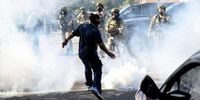On a recent autumn morning at Chicago’s O’Hare International Airport, the hum of rideshare vehicles was shattered by the arrival of federal immigration agents. In a scene that has become disturbingly familiar in October 2025, 11 people were detained at the airport’s designated rideshare staging area, according to AOL News. This marked the second such raid at O’Hare within the month—an earlier operation on October 10 saw around 18 individuals arrested, as reported by NBC Chicago.
These actions have ignited fierce debate over the city’s sanctuary policies and the ability—or willingness—of local leaders to shield residents from federal immigration enforcement. Mayor Brandon Johnson, who campaigned on promises to uphold Chicago’s status as a sanctuary city, has found his administration’s credibility tested. Despite issuing executive orders and vowing to prevent federal agents from using city property for immigration sweeps, the raids have continued. The absence of posted signs declaring the rideshare lot off-limits to immigration agents may have provided a loophole, according to Johnson’s spokesperson Cassio Mendoza, who also promised that legally enforceable signage would soon appear. Yet, as of the latest raid, no such signs were visible.
Federal officials, meanwhile, have defended their actions. Department of Homeland Security Assistant Secretary Tricia McLaughlin stated that those arrested had criminal histories ranging from domestic battery to driving under the influence, though no names were released, making independent verification by The Chicago Tribune impossible. Gregory Bovino, a Border Patrol field leader, took to social media to justify the operations, asserting that these actions aim to “recover jobs seemingly taken from American citizens.”
The raids at O’Hare are only one part of a much larger crackdown. Since September 8, the Department of Homeland Security has arrested over 800 undocumented immigrants in Chicago under the banner of “Operation Midway Blitz,” a campaign launched by the Trump administration despite vocal opposition from city officials. The operation’s scale and tactics have left many residents and advocates reeling.
“Those things are detrimental to the development of a child,” said Stacy Davis Gates, president of the Chicago Teachers Union, in an interview with Word in Black. “It is a departure from everything that young people have understood from our America.”
Educators and advocates say the fallout from these raids extends far beyond those directly detained. Weeks of aggressive Immigration and Customs Enforcement (ICE) activity—including masked, heavily armed agents in unmarked vehicles, nighttime helicopter raids, and tear gas deployed near schools—have instilled a climate of fear throughout Chicago’s neighborhoods. In one particularly harrowing incident on October 3, ICE agents hurled tear gas canisters into a parking lot across from Funston Elementary School, filling classrooms with choking smoke while children as young as six tried to concentrate on their lessons, as recounted by teacher Maria Heavener to The Intercept.
Heavener described the confusion and distress among her students. “We didn’t expect them to throw tear gas right outside of our school building,” she said. “A lot of them were sad, worried, scared, nervous. Some of them said they’re scared because they don’t want their own family members to be taken away.” One child suffered a panic attack. The trauma, Heavener warned, would linger: “They’re all going to hold that in their bodies as they grow up.”
The impact has been measurable. After an ICE raid on an apartment in the South Shore neighborhood on October 2, absenteeism at nearby Adam Clayton Powell, Jr. Paideia Academy School spiked the next day. An unnamed school employee told the South Side Weekly that 60 out of 75 English Language Learners did not show up for class. “That type of trauma doesn’t just stay in the time and the space where it happens; it comes to the school community,” Gates emphasized.
Chicago Public Schools has tried to reassure families, stating that it does not cooperate with federal immigration authorities and that while “law enforcement activity” did occur near some schools, no incidents took place inside the buildings. Still, fear has kept many children at home. This pattern is not unique to Chicago; in Chelsea, Massachusetts, nearly 1,000 students have left the school district since October 2024, many departing the country altogether, according to Boston NPR.
The aggressive tactics have drawn sharp rebuke from labor and immigrant rights groups. Bailey Koch, spokesperson for Service Employees International Union Local 1, which is organizing Illinois rideshare workers, reported confusion and anxiety among detained drivers and their families. The Illinois Coalition for Immigrant and Refugee Rights called the O’Hare raids “reprehensible” and urged those affected to seek support. Veronica Castro, the coalition’s deputy director, highlighted the disruption to both citizens and non-citizens who rely on rideshare services.
Federal officials have pushed back against allegations of excessive force and targeting of children. DHS spokesperson Tricia McLaughlin denied that ICE was conducting raids at schools or targeting children, claiming, “ICE is not conducting enforcement operations at, or ‘raiding,’ schools. ICE is not going to schools to make arrests of children. Criminals are no longer be able to hide in America’s schools to avoid arrest.” She further argued that negative media coverage was creating a climate of fear and contributing to a “1,000% increase in assaults against ICE officers.”
Yet, stories from the front lines tell a different tale. Teachers like Heavener and another music teacher, Kathryn, have described the challenges of maintaining a sense of safety and normalcy in their classrooms. Kathryn said, “It’s even more important right now that we have stable, predictable classrooms and especially places where students can continue to be imaginative and experience joy and learn to work with other people.” Still, she admitted, “Normalcy and joy are difficult to achieve in the current environment.”
The psychological toll is compounded by the militarization of the city. On October 6, President Donald Trump ordered hundreds of Texas National Guard soldiers to Chicago, escalating tensions between city and federal authorities. Illinois and Chicago responded by filing a federal lawsuit, arguing that the deployment lacked lawful justification. A federal judge has given the government until October 22 to reply.
Meanwhile, the financial cost of these operations has not gone unnoticed. Estimates from the National Priorities Project suggest that deploying the National Guard to Chicago could cost $1.59 million per day—money that educators argue could be better spent on underfunded schools. The latest Republican spending bill added $29.9 billion to ICE’s enforcement budget, nearly tripling the $10.25 billion budget for Chicago Public Schools, which serves 630 schools.
Despite the chaos, Chicago’s communities have shown resilience. After the tear gas incident, parents and neighbors formed safe walking corridors for students. Teachers and advocates continue to push for accountability and support for traumatized children. As the city’s leadership and the federal government remain locked in a legal and ideological standoff, it is Chicago’s families and students who bear the brunt—struggling to learn, work, and live amid the uncertainty and fear that now define daily life in the Windy City.
As the legal battles play out and the raids continue, the question on everyone’s mind is simple: How much longer can Chicago’s children and families endure?

